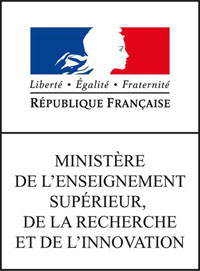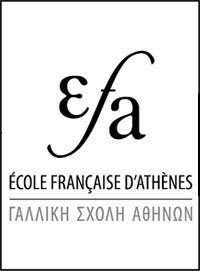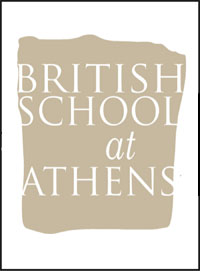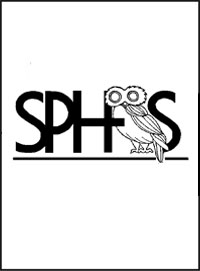Ancient Tenea - 2023
Informations Générales
Numéro de la notice
19644
Année de l'opération
2023
Chronologie
Mots-clés
Espace commercial - Espace public - Habitat - Nécropole - Sépulture - Installation hydraulique - Figurine - Lampe - Monnaie - Outillage/armement - Pierre - Verre
Nature de l'opération
Institution(s)
Localisation
Toponyme
Chiliomodion
Chiliomodion
Notices et opérations liées
Description
Corinthia - Chiliomodi - Ancient Tenea. Dr Elena Korka (Directorate of Prehistoric and Classical Antiquities of the Ministry of Culture), reports on another successful excavation season at Chiliomodi.
M. Kordosi field
This year a section of the Hadrian aqueduct was located, allowing researchers to trace the route of the hydraulic system, that supplied ancient Corinth with water from Stymphalia. The aqueduct was located, at a length of 31 m. so far, in close proximity to the ‘Karkanas’ river and the roman baths; the water channel was built with a vaulted, plastered, semi-circular cross-section roof.
Additionally, on the slopes of the Hagioi Asomatoi hill, part of Tenea’s prehistoric settlement (Fig. 1) was discovered, dating to the Early Bronze Age II (2600–2300 BC). Specifically, a section of the road network was uncovered, with houses arranged on either side. Among the structural remains, the most notable find was an elliptical thermal structure that contained significant quantities of obsidian tools, handmade pottery, large pithoi, and various storage and cooking vessels, as well as spindle whorls and zoomorphic figurines. Particularly striking was the strong presence of imported pottery from Aegina, Attica, Argolis, and Corinth. The findings from this settlement are chronologically contemporary with those from the built deposit excavated in 2021.
A. Skourtis and V. Rantitsas fields
A large building complex dating from the Late Archaic to the Hellenistic period was uncovered (Fig. 2), including three well-constructed reservoirs, one of which featured a staircase. Among the notable finds, a small portable clay altar, a miniature vessel, and a figurine of a horse with a rider suggest a ritual use for these spaces. Of exceptional rarity was the discovery of 29 ancient Greek silver coins, dating from the 6th c. BC to the 330s BC. This treasure includes some of the rarest and most historically significant coins of ancient Greece, such as three staters from Elis minted in Olympia during different Olympic Games, a stater from Aegina featuring a land turtle instead of a sea turtle, and a 5th-century BC stater from Thebes depicting Heracles strangling two serpents with his hands. This hoard (Fig. 3) is linked to ritual-use findings (female and zoomorphic figurines, miniature vessels, etc.) discovered in 2022 and this year, further supporting the ceremonial function of the excavated spaces.
At the same time, the same fields also contained two building complexes from the Roman and Late Roman periods. One, covering 160 m², is a continuation of a 281 m² structure excavated in 2022, featuring laboratory facilities and storage spaces. The second complex, with an excavated area of 300 m², consists of rooms arranged around a raised covered portico-corridor measuring 14.5 m in length and 3 m in width, paved with clay slabs. In both complexes, Roman and Late Roman coins were discovered.
Funerary Monument II Area
Finally, near the Roman Funerary Monument II excavated in 2022, Roman-era pit graves were uncovered. These burials date to the 3rd–4th c. AD, as indicated by the grave goods, such as oil lamps, coins, earrings, other jewellery, and ceramic and glass vessels. Alongside the Roman burials, a cluster of richly furnished Archaic tombs was unearthed, containing grave goods such as skyphoi, aryballoi, pyxides, oinochoai, and bronze pins. The burials included both adult (Fig. 4) and children remains.
Entry by Katerina Argyraki.
M. Kordosi field
This year a section of the Hadrian aqueduct was located, allowing researchers to trace the route of the hydraulic system, that supplied ancient Corinth with water from Stymphalia. The aqueduct was located, at a length of 31 m. so far, in close proximity to the ‘Karkanas’ river and the roman baths; the water channel was built with a vaulted, plastered, semi-circular cross-section roof.
Additionally, on the slopes of the Hagioi Asomatoi hill, part of Tenea’s prehistoric settlement (Fig. 1) was discovered, dating to the Early Bronze Age II (2600–2300 BC). Specifically, a section of the road network was uncovered, with houses arranged on either side. Among the structural remains, the most notable find was an elliptical thermal structure that contained significant quantities of obsidian tools, handmade pottery, large pithoi, and various storage and cooking vessels, as well as spindle whorls and zoomorphic figurines. Particularly striking was the strong presence of imported pottery from Aegina, Attica, Argolis, and Corinth. The findings from this settlement are chronologically contemporary with those from the built deposit excavated in 2021.
A. Skourtis and V. Rantitsas fields
A large building complex dating from the Late Archaic to the Hellenistic period was uncovered (Fig. 2), including three well-constructed reservoirs, one of which featured a staircase. Among the notable finds, a small portable clay altar, a miniature vessel, and a figurine of a horse with a rider suggest a ritual use for these spaces. Of exceptional rarity was the discovery of 29 ancient Greek silver coins, dating from the 6th c. BC to the 330s BC. This treasure includes some of the rarest and most historically significant coins of ancient Greece, such as three staters from Elis minted in Olympia during different Olympic Games, a stater from Aegina featuring a land turtle instead of a sea turtle, and a 5th-century BC stater from Thebes depicting Heracles strangling two serpents with his hands. This hoard (Fig. 3) is linked to ritual-use findings (female and zoomorphic figurines, miniature vessels, etc.) discovered in 2022 and this year, further supporting the ceremonial function of the excavated spaces.
At the same time, the same fields also contained two building complexes from the Roman and Late Roman periods. One, covering 160 m², is a continuation of a 281 m² structure excavated in 2022, featuring laboratory facilities and storage spaces. The second complex, with an excavated area of 300 m², consists of rooms arranged around a raised covered portico-corridor measuring 14.5 m in length and 3 m in width, paved with clay slabs. In both complexes, Roman and Late Roman coins were discovered.
Funerary Monument II Area
Finally, near the Roman Funerary Monument II excavated in 2022, Roman-era pit graves were uncovered. These burials date to the 3rd–4th c. AD, as indicated by the grave goods, such as oil lamps, coins, earrings, other jewellery, and ceramic and glass vessels. Alongside the Roman burials, a cluster of richly furnished Archaic tombs was unearthed, containing grave goods such as skyphoi, aryballoi, pyxides, oinochoai, and bronze pins. The burials included both adult (Fig. 4) and children remains.
Entry by Katerina Argyraki.
Auteur de la notice
Georgios Mouratidis
Références bibliographiques
https://www.culture.gov.gr/el/Information/SitePages/view.aspx?nID=4837
Légende graphique :
![]() localisation de la fouille/de l'opération
localisation de la fouille/de l'opération
![]() localisation du toponyme
localisation du toponyme
![]() polygone du toponyme Chronique
polygone du toponyme Chronique
Fonctionnalités de la carte :
![]() sélectionner un autre fond de plan
sélectionner un autre fond de plan
![]() se rapprocher ou s'éloigner de la zone
se rapprocher ou s'éloigner de la zone
![]() afficher la carte en plein écran
afficher la carte en plein écran
Date de création
2024-09-12 14:43:51
Dernière modification
2025-09-08 10:23:00
Figure(s)
Fig. 2/ Building complexes dating to the Archaic, Classical and Hellenistic periods. Yellow colour highlights buildings dating to the Roman and Late Roman periods
Fig. 3/ Finds from the Archaic and Classical building complexes: (left to right) 1) Portable clay altar, 2) Miniature skyphos, 3) Rider figurine, 4) Treasure of 29 silver coins








